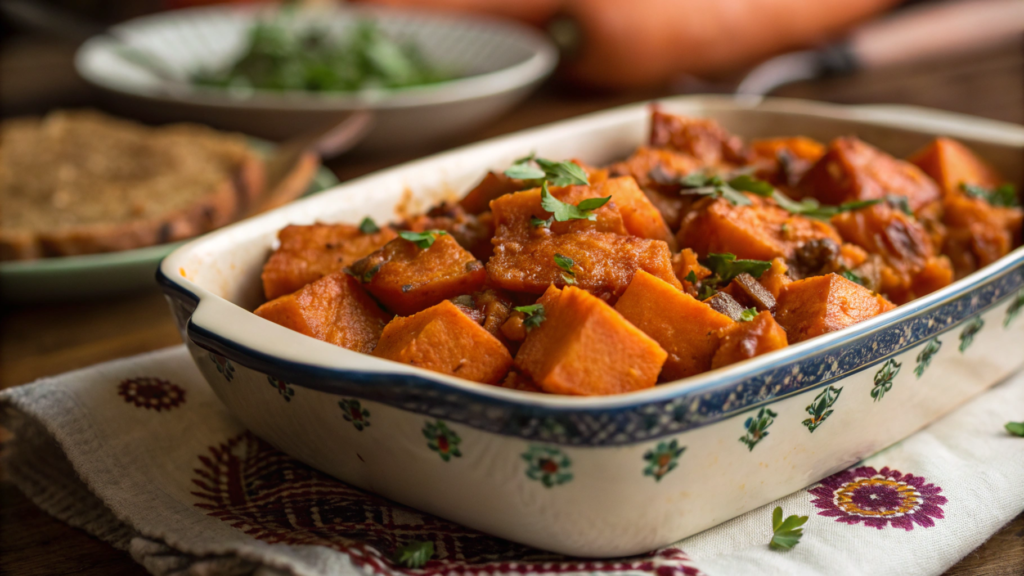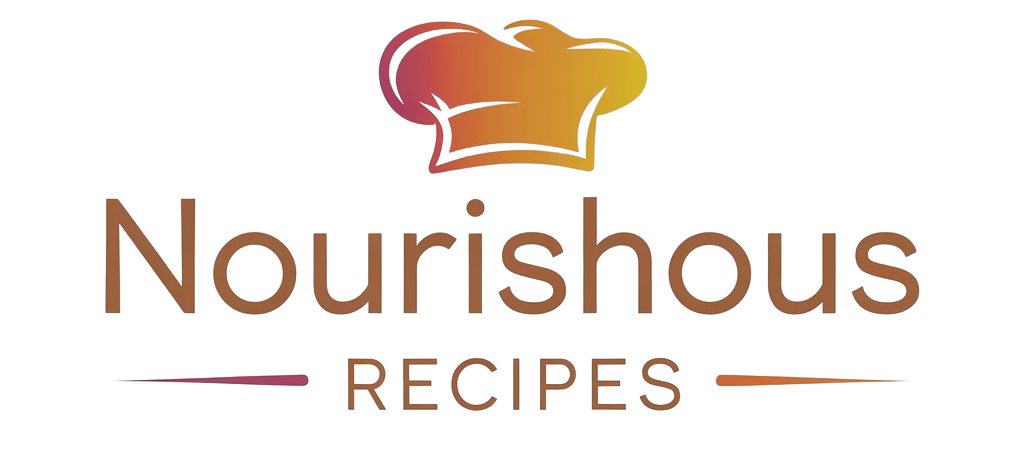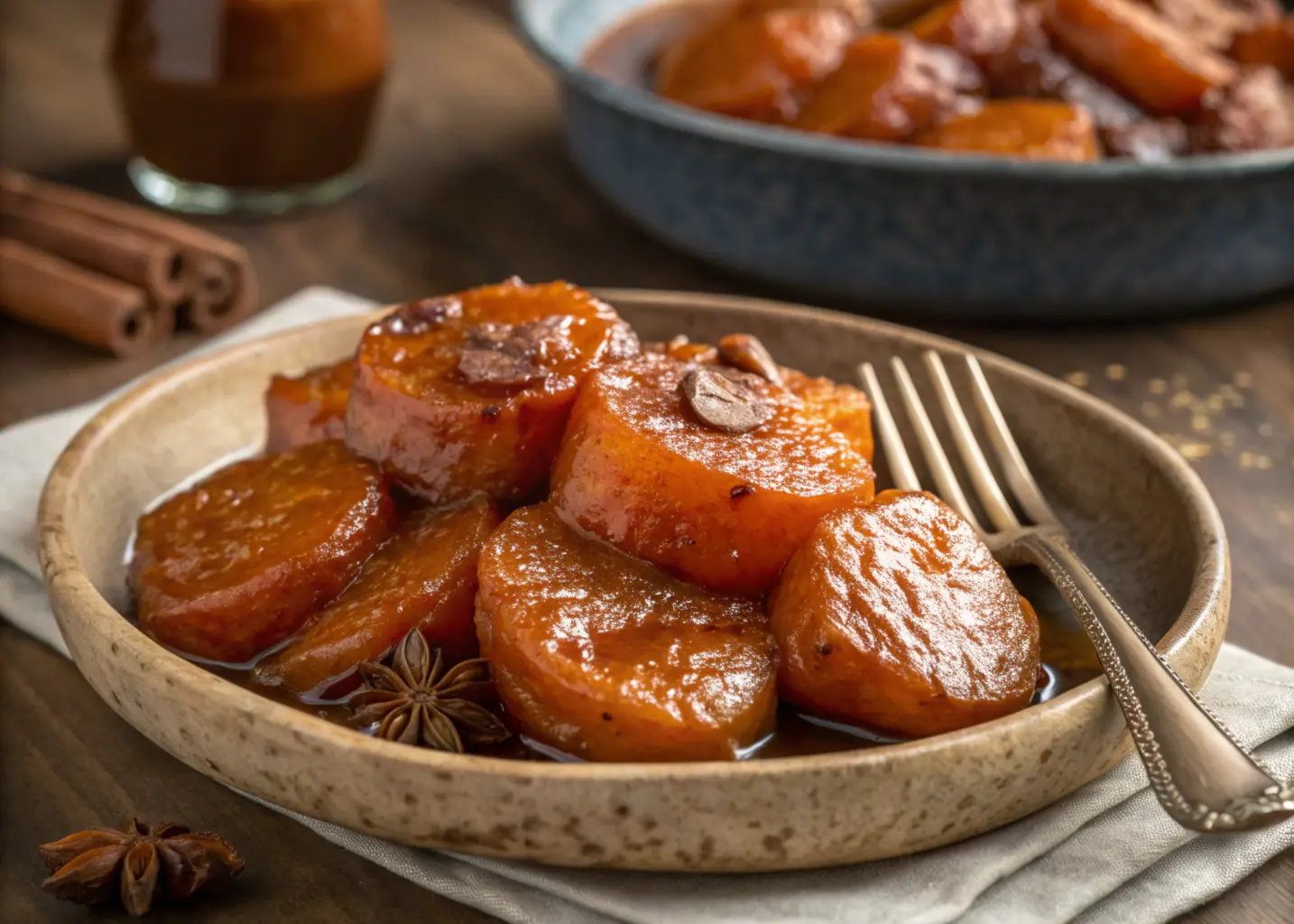If you’ve ever planned a holiday meal or browsed through recipes, you may have encountered candied yams and sweet potatoes. Although these names are often used interchangeably, they are not exactly the same. In fact, there are some surprising differences. This guide will explore these distinctions, diving into their history, nutritional value, cooking methods, and cultural significance.
What Are Yams?
Origins of Yams
Yams are starchy tubers that belong to the Dioscorea genus. Native to Africa, Asia, and the Caribbean, yams have long been a dietary staple in these regions. True yams have rough, scaly skin that can range in color from brown to gray. The flesh of yams varies depending on the variety, with some featuring white, purple, or reddish interiors. Learn more about the origins of yams for a deeper dive into their cultural significance.
Taste and Texture
Yams are less sweet than sweet potatoes and have a dry, starchy texture, making them more similar to regular potatoes in taste and consistency. This texture makes them suitable for various cooking methods, which we explore here.
What Are Sweet Potatoes?
Origins and Characteristics
Sweet potatoes, part of the Convolvulaceae family, originated in Central and South America. Unlike yams, they have smooth skin, which can be tan, orange, or even purple. The interior of sweet potatoes is typically orange, but white and purple varieties also exist.
Sweet and Nutritious
Sweet potatoes are sweeter than yams and have a soft, creamy texture when cooked. They are packed with nutrients like beta-carotene, vitamins A and C, and fiber. Check out our guide to cooking with sweet potatoes for delicious and nutritious recipe ideas.
Why the Confusion Between Yams and Sweet Potatoes?
Historical Misnaming
The mix-up in the U.S. goes back to the 19th century. Farmers in the South started calling orange-fleshed sweet potatoes “yams” to set them apart from the lighter, firmer varieties. This naming choice became popular, and even now, many grocery stores label sweet potatoes as yams, keeping the confusion alive.
True Yams Are Rare in the U.S.
Unless you shop at international markets, the “yams” you see in American grocery stores are almost always sweet potatoes. True yams are imported and are far less common in the U.S. Learn the difference between sweet potatoes and yams here.
Candied Yams vs. Sweet Potatoes: What’s in the Dish?
The Truth About Candied Yams
Candied yams are a classic holiday dish in American cuisine. However, people typically make the dish with sweet potatoes rather than true yams. They cook slices of sweet potato in a syrupy blend of sugar, butter, and spices, creating a caramelized, melt-in-your-mouth treat. As a result, this version has become a beloved holiday classic in many households, often enjoyed during festive meals and celebration
Why the Misnaming Persists
The mislabeling of sweet potatoes as yams has contributed to the misconception that the two are the same. Unless you’re sourcing true yams from a specialty store, your candied yams recipe likely features sweet potatoes.
Nutritional Differences Between Yams and Sweet Potatoes
| Nutrient | Yams | Sweet Potatoes |
|---|---|---|
| Calories | Lower in calories | Higher in calories due to sugars |
| Carbohydrates | Rich in complex carbs | Contains simple sugars |
| Vitamins | High in potassium, manganese | High in beta-carotene, vitamins A, C, and B6 |
| Fiber | Slightly higher fiber content | Moderately high fiber |
| Antioxidants | Low | High levels, especially in orange/purple varieties |
Yams and sweet potatoes are both nutrient-rich, but they offer unique health benefits depending on your dietary needs. Yams, being rich in potassium, can support healthy blood pressure levels and muscle function. Their complex carbohydrates provide sustained energy, making them an excellent choice for athletes or those needing a longer-lasting energy source.
Their natural sugars provide a quick energy boost, while their fiber content supports digestion. The high vitamin A content in sweet potatoes can also improve skin health, making them a beauty food for glowing skin.
Including both yams and sweet potatoes in your diet ensures a well-rounded intake of essential nutrients, balancing the starchy qualities of yams with the natural sweetness and antioxidants of sweet potatoes.
Sweet potatoes are a better choice for those seeking a sweet, nutrient-dense option, while yams are ideal for a starchy, low-sugar alternative.
Cooking Techniques of candied and sweet potatoes
How to Cook Yams
Yams are starchy and best suited for methods that enhance their natural texture:
- Boiling: Ideal for softening yams for mashing or further preparation.
- Roasting: Creates a mild sweetness and crisp exterior.
- Frying: Common in West African cuisine, such as yam fries or fritters.
- Steaming: Retains nutrients and emphasizes their natural flavor.
How to Cook Sweet Potatoes
Sweet potatoes’ natural sweetness makes them perfect for:
- Baking: Brings out their creamy, sweet texture.
- Roasting: Enhances caramelization for added depth.
- Mashing: A popular choice for casseroles and side dishes.
- Frying: Used for sweet potato fries or chips.
- Boiling: Retains moisture for soups and stews.
Both yams and sweet potatoes pair beautifully with spices like cinnamon, nutmeg, and allspice, making them versatile for sweet or savory dishes.
Taste Comparison of Candied Yams and Sweet Potatoes
Yams
Yams have an earthy, nutty flavor with a dry, starchy texture. They lack the natural sweetness of sweet potatoes.
Sweet Potatoes
Sweet potatoes are creamy, sweet, and rich. Their flavor shines in baked or roasted preparations, particularly in desserts like candied yams.
Cultural Significance
Yams in African and Caribbean Cultures
Yams are deeply rooted in the cuisines of Africa and the Caribbean. They symbolize fertility and prosperity and play a central role in traditional ceremonies. Dishes like pounded yam and yam porridge highlight their cultural importance.
Sweet Potatoes in American Cuisine
Sweet potatoes are iconic in American holiday traditions, appearing in dishes like sweet potato casserole and pie. Their vibrant color and sweet flavor make them a favorite for festive meals.
The Role of Yams and Sweet Potatoes in Holiday Traditions
In many cultures, yams and sweet potatoes hold a special place in holiday traditions. In the United States, sweet potatoes shine in dishes like sweet potato pie and candied yams, often topped with marshmallows or pecans. These dishes are symbolic of comfort, family, and festivity, frequently making an appearance during Thanksgiving and other celebratory meals.
In West Africa, yams are a central part of the New Yam Festival, a vibrant celebration of the harvest season. This festival honors the role of yams in sustaining communities and often includes feasts, dances, and traditional rituals. The cultural importance of these tubers reflects their historical significance as symbols of sustenance, abundance, and the connection to the land.

Sweet Potatoes in Global Cuisines
Sweet potatoes are cherished around the globe and feature in numerous iconic dishes that reflect diverse culinary traditions. In Japan, for instance, sweet potatoes shine in daigaku imo, a sweet and caramelized preparation commonly enjoyed as a dessert or snack. In Latin American cuisine, they are highlighted in camote enmielado, a comforting dish where the tuber is gently simmered with honey and warming spices. These regional variations showcase the sweet potato’s adaptability, turning it into a beloved ingredient in both savory and sweet recipes across cultures.
In India, sweet potatoes hold a special place during fasting periods. For instance, they are typically boiled or roasted and seasoned with aromatic spices like cumin and black pepper, making them both nourishing and flavorful. Moreover, their incredible adaptability allows sweet potatoes to seamlessly fit into both sweet and savory recipes. As a result, they have solidified their reputation as a global culinary treasure. Not only that, but their versatility also makes them a staple in various cultural cuisines, creating an enduring appeal worldwide.
Modern Takes on Candied Yams
As the world of cooking evolves, classic recipes are being updated with healthier and more creative ideas. For instance, modern versions of candied yams now include natural sweeteners like maple syrup or honey instead of refined sugar. This change not only enhances the flavor but also makes the dish better for those watching their sugar intake. Furthermore, it aligns with the growing preference for healthier alternatives.
In addition, some chefs are incorporating ingredients like citrus zest, which not only gives the dish a fresh and tangy flavor but also adds a burst of brightness. Moreover, nuts or dried fruits are becoming another popular addition, contributing both texture and a hint of natural sweetness. As a result, these updates not only breathe new life into the traditional recipe but also make it more appealing to a wider range of tastes, all while still honoring its roots.
Consequently, the evolution of this dish demonstrates how culinary innovation can both preserve tradition and meet the demands of a health-conscious audience. Therefore, these changes represent a significant shift toward modern, healthier cooking trends. Ultimately, they highlight the exciting possibilities that emerge when classic dishes are reimagined with a modern twist.
For a savory spin, some variations include a touch of chili powder or smoked paprika to balance the sweetness with a hint of spice. Whether traditional or innovative, the essence of candied yams remains rooted in their ability to comfort and delight during festive meals.
Environmental Impact of Yams and Sweet Potatoes
Both yams and sweet potatoes are eco-friendly crops, but the way they are grown differs in some key ways. Yams are typically cultivated in warm, tropical regions, where they naturally resist drought and pests. They require little fertilizer and thrive in poor soils, making them an essential food source in areas with challenging farming conditions.
Sweet potatoes, on the other hand, grow well in a variety of climates and are considered one of the most efficient crops globally. They produce a substantial harvest from a small area, making them a crucial food source in regions facing hunger. Their ability to thrive in sandy or loamy soils adds to their versatility, allowing farmers to adopt sustainable farming practices worldwide.
By choosing these crops, individuals can support eco-friendly food systems that promote sustainability and contribute to improving global food security.
How to Store Yams and Sweet Potatoes
Storing yams and sweet potatoes properly is important to keep their quality and flavor. Yams should be kept in a cool, dark, and dry place with good airflow. Don’t refrigerate them, as the cold can change their texture and taste.
Sweet potatoes also like cool, dark spaces but can handle small temperature changes better. To store them longer, you can cure sweet potatoes by keeping them in a warm, humid place for about a week. This process makes them sweeter and helps them last longer. When stored correctly, both yams and sweet potatoes can stay fresh for several weeks.
How to Tell the Difference: Grocery Store Tips
To determine whether you’re buying yams or sweet potatoes, look for these distinguishing traits:
- True Yams: Rough, scaly skin; dry and starchy interior.
- Sweet Potatoes: Smooth skin; sweet and moist flesh.
When in doubt, check the label or consult a store associate.
Choosing the Right Ingredient for Your Recipe
- Use sweet potatoes for dishes that require creaminess and sweetness, like candied yams or casseroles.
- Opt for yams in recipes that benefit from a starchy, less sweet ingredient, such as African or Caribbean dishes.
The Rise of Sweet Potato Trends
weet potatoes have gained significant popularity in recent years due to their versatility and numerous health benefits. Rich in vitamins, minerals, and fiber, they are not only a nutritious addition to any diet but also a flavorful ingredient in a wide range of dishes. From sweet potato fries on fast-food menus to sweet potato toast favored by health-conscious eaters, this humble root has become a trendy food choice. It’s now featured in everything from smoothies to gluten-free baked goods, proving its adaptability in both savory and sweet recipes.
Sweet potatoes are also a big hit in plant-based diets, as they can replace meat in dishes like stuffed sweet potato bowls and sweet potato burgers. In addition to their versatility, their flexibility makes them a favorite for chefs and home cooks alike, who want to create both tasty and healthy meals. Consequently, sweet potatoes have become a staple in plant-based cooking, offering a nutritious and satisfying alternative to traditional ingredients.
Conclusion
Understanding the differences between candied yams and sweet potatoes can elevate your culinary creations. While the two are often confused, their distinct characteristics make them ideal for different recipes and flavor profiles. Candied yams, for instance, are typically sweeter and softer, making them perfect for dishes with rich, syrupy toppings. In contrast, sweet potatoes have a more complex flavor and a firmer texture, which allows them to shine in both savory and sweet preparations. The next time you prepare a holiday meal or experiment with a new dish, you’ll know exactly what you’re cooking with and why. Happy cooking!
Frequently Asked Questions (FAQs)
- Are sweet potatoes healthier than yams? It depends on your nutritional needs. Sweet potatoes are packed with beta-carotene, antioxidants, and vitamins A and C, making them a great choice for boosting immunity and supporting eye health. Yams, on the other hand, contain more fiber and complex carbohydrates. These nutrients help provide steady energy throughout the day and support healthy digestion. Both yams and sweet potatoes are nutritious choices, so the better option depends on your specific dietary needs and preferences!
- Why are sweet potatoes mislabeled as yams in the U.S.?
The mislabeling originated in the 19th century to differentiate orange-fleshed sweet potatoes from paler varieties. The name stuck and persists today. - Can I substitute yams for sweet potatoes in recipes?
Yams can be used in recipes requiring starchier, less sweet ingredients but may not provide the creamy sweetness of sweet potatoes. - Where can I find true yams?
True yams are available at international markets specializing in African, Caribbean, or Asian products. - What is the best method to cook yams?
Boiling, roasting, or frying are ideal methods for cooking yams, enhancing their starchy texture and mild flavor.

